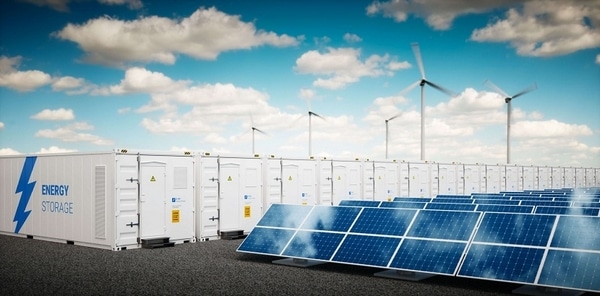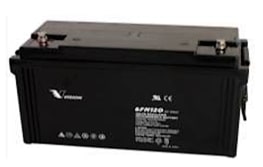
Renewable Energies Context
An important limitation that renewable energies have is that they depend on natural flows, in other words, their production is not continuous, which is why in many cases they do not fit at the time they are needed.
The problem is that for energy to be used, it has to be available when required.
That is why, it is essential to store energy for later use, this allows you to get the most out of renewable energy production facilities.
This article will address the issue of energy storage, highlighting its operation, as well as its advantages, limitations and other features, are taken into account for its design and installation.
Energy Storage Systems (ESS)
The energy storage systems (see Fig 1) allow conserving excess electricity and releasing it when necessary. This presents several advantages:
- The reduction of the huge differences in the demand curve, thus achieving greater quality in the supply of power, greater stability of the system and avoiding over-dimensioning.
- The development of smart grids, which allow the bi-directionality of electricity (distributed generation), thus being able to supply energy to the grid or receive it.
- The integration of renewable energy sources, allowing their use without the presence of generation.
Storage systems have important features that solve many shortcomings in generation. However, like any technological development they have certain limitations or disadvantages, which are related to:
• The cost: Although costs have reduced, there is still a limitation when considering their use, due to the number of batteries needed to have an appropriate level of generation against other options that can currently be cheaper.
• The dimensions: The size of the batteries, especially when the arrangement has a considerable number of batteries it becomes a problem for its implementation given that a large space specially conditioned for that purpose is necessary.
• Lifespan: Even if all specifications are respected; depth of discharge, cycles of use, environmental conditions and maintenance, the batteries have a relatively short life with respect to the elements of generation and must be replaced periodically.
Therefore to choose the system that best suits the installation of a user, the following factors should be taken into account:
• Energy: Storage device performance, system life (number of cycles of loading and unloading), utility (storage system outlet installed), amount of energy required to store and storage time (short or long term).
• Economic: Price per kW of the storage and transformation system.
• Environmental: Impact on the environment, either by its manufacture or by its installation and use.
Electrochemical storage
The devices capable of storing the energy through the process of reduction-oxidation produced in the electrochemical bonds of the electrolyte are the batteries (see Fig 2).

Fig. 2 Lead AGM Type Battery | image: autosolar.es
These elements have a cycle that consists of unloading and loading, allowing their reuse according to their useful life, this will depend on the characteristics specified by the manufacturer. This capacity determines the amount of time that a certain level of current can produce, determining the autonomy of independent power generation.
When scaling the level of energy requirement, the storage capacity and production must be increased, grouping the batteries into arrays, combining the serial and parallel connections in order to obtain the voltage and current required by the load.
This arrangement is charged by one or many energy generation devices during its productive time to use the storage and compensate the non-production periods
To illustrate the scope, let’s examine one of the top battery solutions available in the market called the Tesla Powerwall.
Which consists of a 7kW or 10kW battery (two versions) with a built-in inverter and ready for connection to solar panels or the new development of solar roof called Solar Roof (solar panels in tile form that integrates generation with decoration and functionality).
This device also has the ability to provide surplus energy to the network (where there is the appropriate technology and the necessary legislation), thus achieving a generation of electricity that would represent a considerable decrease in billing.
Today, the acquisition of a Powerwall 2 ($ 5,500, 14 kWh, 10-year warranty) is a profitable and ecological option. While Tesla continues to bet on this sector, it will be seen how the final consumers react.
References
[1] https://es.wikipedia.org/wiki/Bater%C3%ADa_el%C3%A9ctrica
[2] https://experience.acciona.com/es/energias-renovables/desafio-de-almacenar-energia-renovable/
[3] Sistema de Almacenamiento de Energía. Autor: Javier Martín. Universidad de Valladolid.
what is the point of having solar, It’s inverex still needs electric. It means again I will pay the bill for it. I guess it just minimize my bill… Other than that there is no any perfect benefits of it.